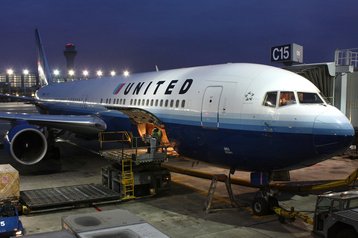United Airlines has almost completed its cloud migration.
During the airline's recent Q1 2024 earnings call, CFO Mike Leskinen revealed the company has migrated 70-90 percent of its workloads to the cloud, with the rest still on-premise.
The company has had a challenging first quarter. Following an incident in which a cabin panel blew out on a flight operated by rival Alaska Airlines, United had to conduct a three-week grounding of its 737 Max 9 jets, and cancel hundreds of flights. According to the company, this led to a $124m loss in the first three months of the year. It has also reduced United's expected fleet number for the year, as Boeing's production capacity has been limited by FAA restrictions.
In light of this, Leskinen noted that the company is attempting to offset those costs with "great operation," including some "longer term cost initiative that [the company] has started."
"We've got significant opportunities within our technology organization to help drive efficiencies throughout the full airline, but one that I'll highlight is moving a lot of our mainframe computing into the cloud," said Leskinen. However, he went on to note that "you don't save the cost of moving to the cloud until you shut the mainframe down."
Leskinen added: "In many cases, we've moved 70, 80, or 90 percent to the cloud, but we still have to maintain that mainframe with 10 percent or 20 percent of the systems on that mainframe." Leskinen said the company would share more information about this at its upcoming investor day on May 1.
United Airlines named Amazon Web Services (AWS) as its preferred cloud provider in 2021, as part of its 'United Next' strategy. Part of that strategy is to add 700 more aircraft to its fleet over the next few years.
During the AWS re:Invent 2024 develop conference, United Airlines discussed in a presentation the challenges the company has faced. "We have a really complex business, whether it in flight operations, or network operations, or our revenue management, or tech ops and maintenance. It is really data that connects the dots between these complex business domains and divisions," said Sanjay Nair, head of data, AI, and analytics engineering teams at United.
Nair went on to say that the company struggled with the scale of its technology platform. United had over 50 business domains, thousands of users, and hundreds of thousands of workloads, and all that data was siloed.
"Over the past 20, 25 years, people brought in solutions to solve problems that eventually just became point solutions. It was not just data silos, it was huge walls that we had to overcome to get data together." The migration to AWS was hoped to solve this.
Several airlines have conducted similar migrations. In March 2024, British Airways shared that it was migrating 700 IT systems to the cloud as part of a $9bn modernization program.
In 2023, LATAM Airlines announced that it had closed four data centers and moved to Google Cloud, and Southwest Airlines shared that it would be moving to AWS.
In 2021, United Airlines sold its Mount Prospect campus to CloudHQ to make way for a data center development. The company suffered multiple significant IT outages in 2017, leading to grounded flights.







